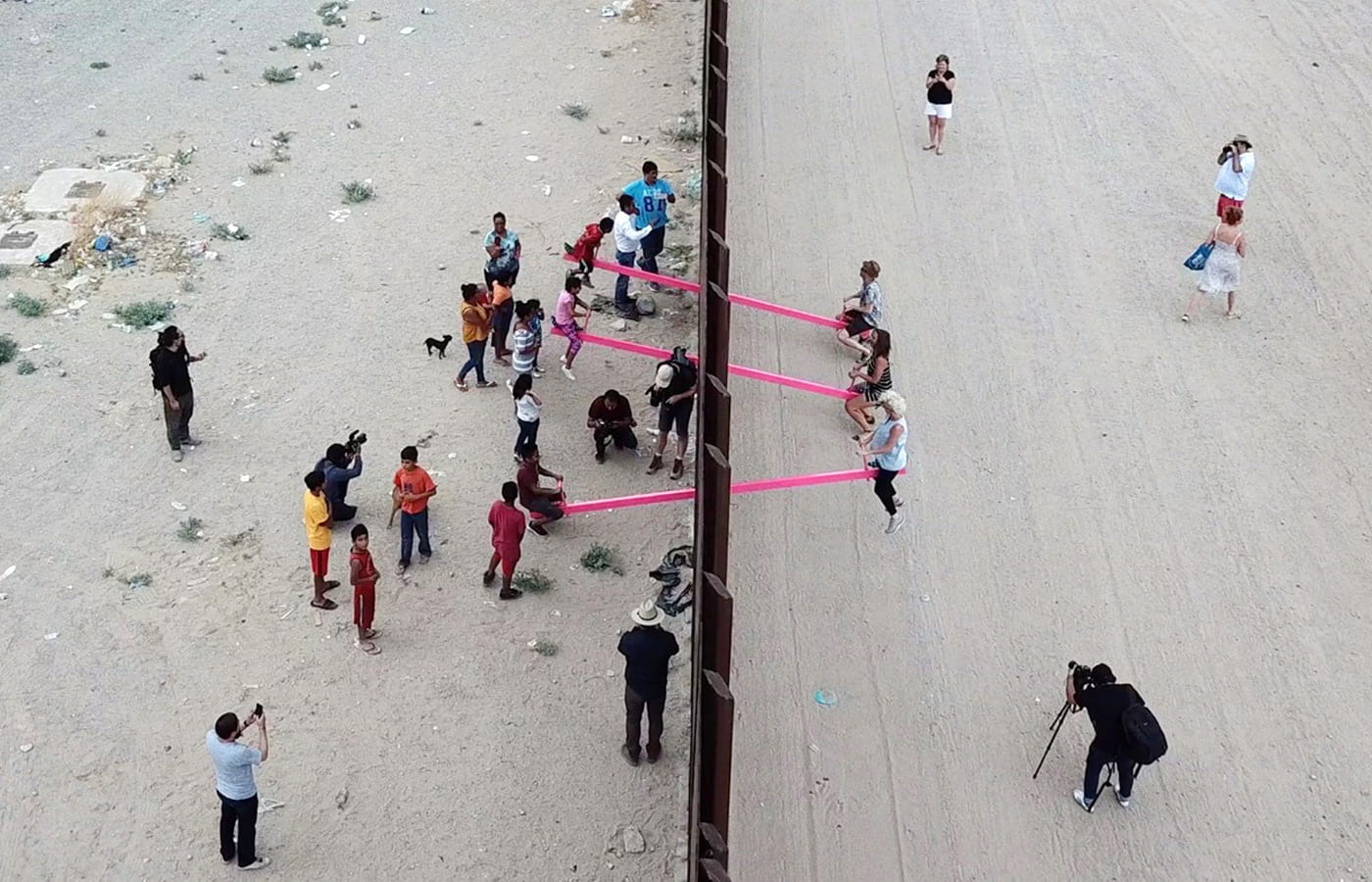
The Teeter Totter Wall, designed by SJSU Design Chair Virginia San Fratello and UC Berkeley Architecture Professor Ronald Rael, in 2019. Photo courtesy of Ronald Rael.
In summer 2019, a design project entitled the “Teeter Totter Wall” created by San José State Design Department Chair Virginia San Fratello and UC Berkeley Architecture Professor Ronald Rael became an international sensation when a video of their pink seesaw went viral. As featured in the spring/summer 2019 edition of Washington Square, the project was a collaborative effort involving communities along the United States-Mexico border. By working together, San Fratello, Rael and a collective of Mexican artists created a pink seesaw that used the border wall as the physical and metaphoric fulcrum. Children on both sides of the wall were invited to play for 40 minutes.
A year and a half later, the project has once again captured the imagination of the world. On January 19, 2021, the Design Museum in London announced that the project had won the prestigious Beazley Design of the Year, an honor that recognizes the most innovative designs across fashion, architecture, digital, transport, product and graphic design from the previous year, as nominated by public and design experts worldwide. The winning designers’ work will be included in a physical and virtual exhibition alongside the 73 other nominees at the Design Museum in London.
“The Beazley Design of the Year are the Oscars of the design world,” said Razia Iqbal, BBC journalist and chair of the judging committee for the 2020 Beazley Awards. In an award announcement video released on the Design Museum website, Iqbal said that judges were extremely moved by the Teeter Totter Wall. “The project wasn’t just something that felt symbolically important. It talked about the possibility of things. That’s what moved us and made us feel that all kinds of things are possible when people come together with great ideas and determination.”
San Fratello and Rael were surprised and delighted to hear the news of their winning design, a project that had been in progress for nearly a decade and existed as a physical installation for less than an hour, yet whose impact continues to reverberate internationally, more than a year later.
“Great design allows us to see something in a way we could not before,” said Shannon Miller, dean of San José State’s College of Humanities and the Arts. “These seesaws did exactly that—transforming borders from barriers to bridges, and making division instead an opportunity for connection, play and joy.”
While the Teeter Totter Wall is not currently installed on the border, San Fratello welcomes further collaboration with their partner in Mexico, Colectivo Chopeke, who helped fabricate metal for the seesaw in 2019. She hopes that the project will eventually result in actual social change.
“I think this project speaks to the horror of the border wall, it speaks to the fact that this land was once united and is now divided, and it shows the faces of the families, the mothers and children who live at the border,” said San Fratello from her Colorado home, where she has been sheltering in place and teaching remotely since fall 2020. “In terms of a larger picture, the project speaks to trade and balances between our two nations and the way we treat our neighbors, the care that we take for people that we play and work with. We need to bring joy to other people’s life at this time where we’re so disconnected and hungry for meaningful connections.”
